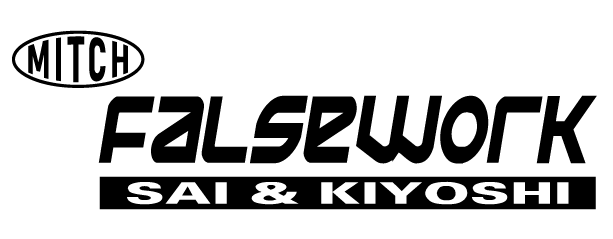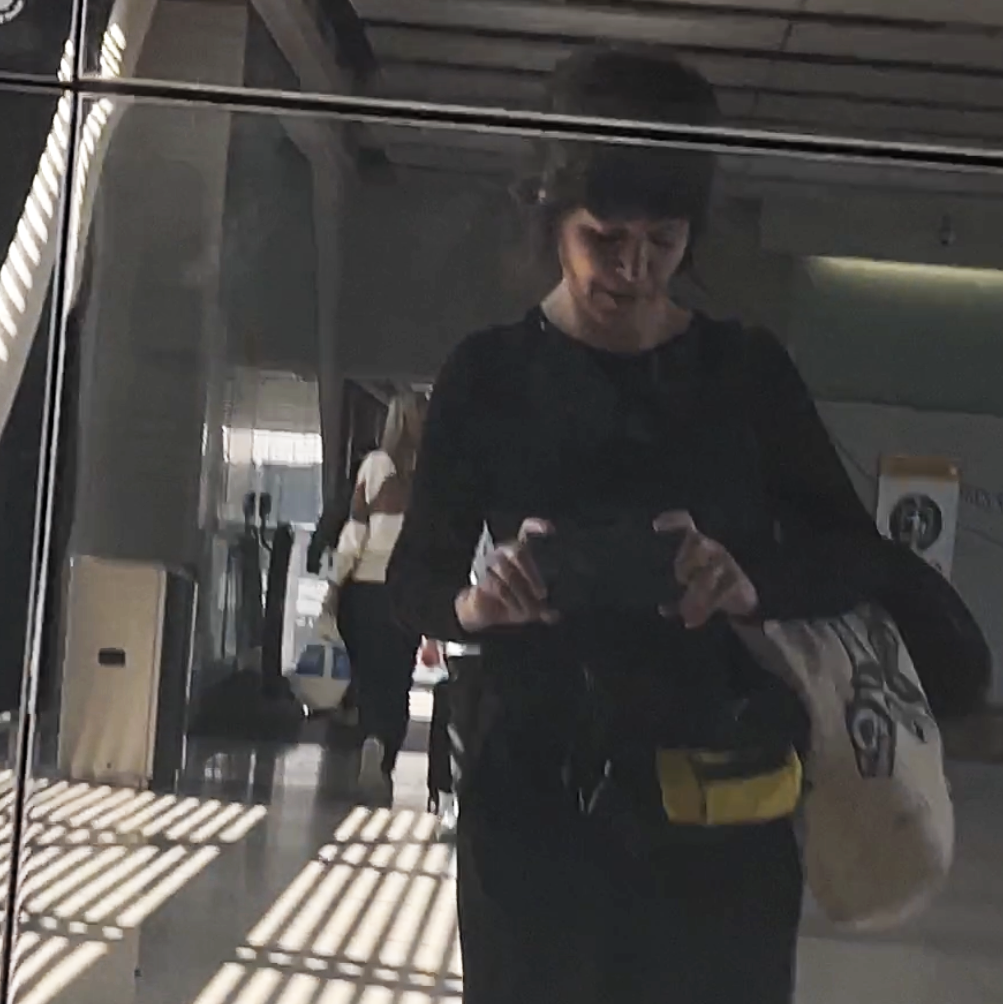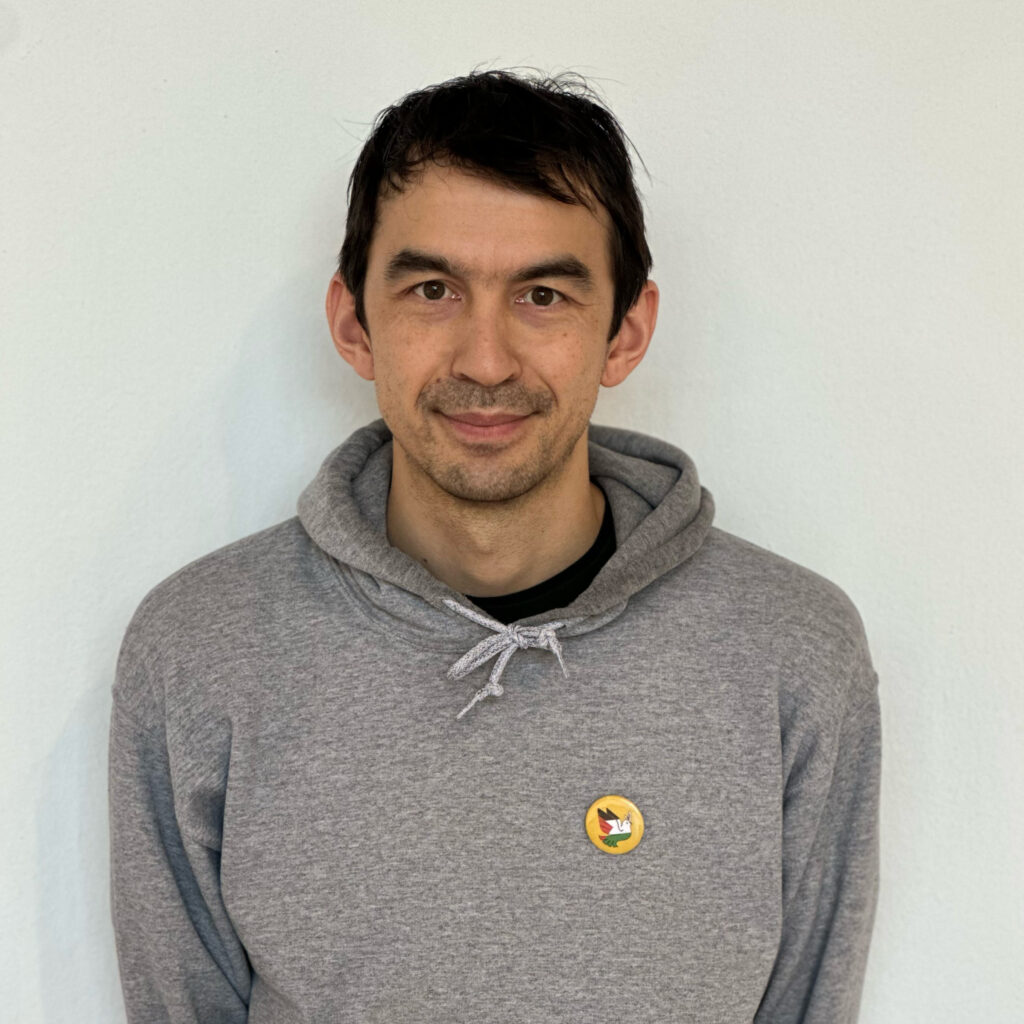- Artists’ biography, Text
- Show Abstract (about the exhibition), Text
- Tactile Object List, Transcript
- Exhibition Works, Text Visual Descriptions
- Curatorial Essay, by Katrina Orlowski
- Creative Access Tour, Transcript – Coming Soon
- Transcript for Yuǎn 遠 | Yuàn video
Artist Biography
Jenie Gao 高皆倪 | 高韻馨
(they/she) has run an anti-gentrification arts business since 2014, specializing in printmaking, public art, social practice, and community storytelling. They consult for cultural organizations and the public sector on equity and ethics.
Jenie pulls from experiences as a person of Taiwanese-Chinese heritage and a descendant of working-class immigrants. Prior to founding their business, Jenie worked in the museum industry, public education, and lean manufacturing. Through their cross-section of experiences, Jenie has become attuned to issues of artists’ labour, cultural power, and institutional accountability. They run a paid apprenticeship program and have thus far mentored 25 emerging artists.
Jenie has a BFA in Printmaking/Drawing from Washington University in St. Louis and an MFA from Emily Carr University of Art + Design. Their work is in 40 institutional collections including Bainbridge Island Museum of Art, Princeton University, Cornell University, Stanford University, and the Library of Congress. Their recent exhibits include Museum of Wisconsin Art, Trout Museum of Art, Burnaby Village Museum, Cedarburg Museum, and South Bend Museum of Art. Their work has been included in publications such as PBS, Shoutout LA, and Fête Chinoise. Their art residencies include Women’s Studio Workshop in Kingston, New York; Art in the Park with Vancouver Board of Parks & Recreation: Decolonization, Art, & Culture; Ma’s House in the Shinnecock Reservation in Southampton, New York; Iowa Lakeside Laboratory in Okoboji, Iowa; the Bubbler at Madison Public Library in Madison, Wisconsin; Artist Campaign School in Chicago, Illinois; Proyecto’ace in Buenos Aires, Argentina; and Museo de Arte Moderno in Chile. They are a TEDx Madison speaker and gave a talk entitled The Power and Purpose of Creativity.
Jenie Gao is the recently appointed Executive Director of Centre A: Vancouver International Centre for Contemporary Asian Art. They live on the unceded lands of the Musqueam, Squamish, and Tsleil-Waututh peoples.
Learn more about Jenie by visiting their:
Website at jenie.org
Instagram at https://instagram.com/jeniegao
Facebook at https://facebook.com/jeniesart
Bluesky at https://bsky.app/profile/jeniegao.bsky.social
Show Abstract
Where Mountain Cats Live is a lush invitation for strengthening community bonds, while acknowledging the precarity that we often build our roots upon. Via table-based installation, prints, and accompanying artist’s books, artist Jenie Gao collapses layers of global and local colonization, childhood memories, and familial narratives of home, displacement, and perseverance, embedded in individual objects.
The centrepiece of this exhibition is the iconic ‘lazy Susan’ table, a post-colonial innovation emblematic of Chinese American and Canadian restaurants. The table features hand-carved images of rabbits and cats in a cyclical chase, from a story that Gao’s mother tells of her bravery while facing ‘mountain lions’ outside her childhood home on a mountainside in Keelung, Taiwan. The work captures a moment when a mother’s stories are suspended between a child’s imagination and an elder’s recollection, and as Gao deals with their present-day dilemmas: the predatory realtors encroaching upon their mother’s home in rural Kansas, increasing pollution and land destruction, and the stubborn resilience of native flora and fauna that nevertheless persist and return.
Where Mountain Cats Live is an investigation of material culture, an homage to the ‘imagination of the oppressed,’ and a love letter to Jenie Gao’s mother and extended communities who, in the face of many uncertainties, maintain a sense of home.
Tactile Object (welcome station)
Note: a laminated PDF in gallery of this information is also available.
Tactile Objects:
- A paper and acrylic tactile object – it depicts the animals within True Rabbits, False Lions, the print on the east wall or tactile map location C. It is labeled in English and Universal English Braille. It is described in the creative access audio tour in track 11.
- An all paper tactile version of The Color of Jade #6, the second of four framed works on the west wall at location H on the tactile map. It depicts an organic shape that is repeated across the four installed works. A piece of rag paper, similar to the printing paper with a raw edge like those used in The Color of Jade and True Rabbit, False Lions series, is available for you to feel the texture and weight of printmaking paper. These are marked with English and Universal English Braille labels. It is described in the creative access audio tour in track 17.
- Two carved boards from Jenie’s collection are available to handle. The larger, thicker panel is a work in progress of a seahorse. The longer, double-sided panel has fur and a tiger’s face in profile carved in negative into the board, and the underside features a cluster of large-petalled flowers. These relate to the process used in the centrepiece of the show and the prints True Rabbits, False Lions.
- The artist’s books on the shelf, at location D, E, and F on the tactile map, can be handled and examined using a magnifying glass. Our magnifying glasses are near location F and are 5x magnification. A non-printed version of the artist’s book Dear Ma | Ethic with simple braille is available at the welcome station, so you can explore the accordion fold structure more freely, but you are welcome to handle the artists books on display on the shelf on the south wall.
Descriptions of the books Dear Ma | Ethics and Three Generations Happy Family are available in tracks 12-15, and are narrated in tracks 19-21.
Yuǎn 遠 | Yuàn 苑 tactile prototype is available to handle on the shelf at location F, but the full text can be viewed on display within the vitrine, and the contents of the book are read in the video in the media lab and in audio track 19. This audio track describing the video plays in gallery on Fridays during the blind-led tours. - Two tactile maps are available for the show. The first is a 2D map showing a top-down (bird’s-eye view) of the gallery and full first floor, including the media lab and washroom. The second map is a 3D dollhouse, which only depicts the gallery and has clay and paper objects to help orient you and assist with wayfinding through the gallery. Both maps are used as references in the creative audio tour on tracks 6-17 online and on the yoto player in gallery.
Exhibition Works
Yuǎn 遠 | Yuàn 苑 Artist Book
Visual Description: A circular paper booklet that folds into a quarter circle and assembled together in an accordion fold. Each page contains text letterpress printed in a deep purple, serif font. The back of the panels contains illustrations printed in jade green with a light embossment. The booklet’s sleeve, in the shape of a quarter circle, is pale blue with white illustrations. The text Yuǎn 遠 Yuàn 苑 is printed on the front in a deep purple colour along with an illustration of two deer bent down eating from the ground.
The Colour of Jade: After Felix Gonzales-Torres’ Forbidden Colors (4 framed works)
The Color of Jade #6 (After Felix Gonzales-Torres’ Forbidden Colors)
Visual Description: A monoprint in portrait orientation coloured with a cherry red into lime green gradient with the green bleeding into the red from the centre. In the foreground are organic symmetrical shapes in pale yellow, white and black, overlapping one another in the centre of the piece.
The Color of Jade #9 (After Felix Gonzales-Torres’ Forbidden Colors)
Visual Description: A monoprint in portrait orientation with a pale yellow background and a thick white border. In the foreground is an organic symmetrical shape in a faded dark grey with a granulated texture. Overlapping and surrounding it are smaller organic, symmetrical shapes in white and faded grey. The shapes have a transparent quality resulting in a darkening effect on parts that overlap.
The Color of Jade #8 (After Felix Gonzales-Torres’ Forbidden Colors)
Visual Description: A black and white monoprint in portrait orientation with a thick white border. The drawing contains organic, symmetrical shapes arranged vertically in the centre of the page. On the top left and bottom right corner are nearly identical organic shapes that appear as if negative space from the white border protrudes inwards into the drawing.
The Color of Jade #1 (After Felix Gonzales-Torres’ Forbidden Colors)
Visual Description: A monoprint in portrait orientation coloured with a cherry red to lime green gradient background, surrounded by a thick white border. In the centre of the page is a white organic, symmetrical shape partially covered by a net-like shape drawn diagonally across the bottom right corner.
True Rabbits, False Lions (woodblock print)
Visual Description: A circular woodblock print that depicts an illustration of two cats and two rabbits in a cyclical chase, surrounded by mulberry leaves and berries, tiger lilies, wild roses, and red clovers. The print is coloured with a deep purple to medium jade green gradient.
Creative Access Audio Tour
Coming soon – December 7th
Curatorial Essay
by Katrina Orlowski
Where Mountain Cats Live transforms the gallery into an intimate space, at once both a comfortable family room where meals and stories are shared, as well as a tenderly recreated archive documenting oral histories, material inheritances, and embodied personal experiences that would otherwise more than likely be lost or omitted from the records. It is lush and playful, but also vulnerable, delicate. Stepping into the gallery is like pouring over cherished mementos with a close friend, a heart-to-heart with quiet revelations, spontaneous giggles, and safe silences.
In one of our first meetings together, Jenie Gao and I bonded over our lingering longing to have pursued a career in archives. We share an appreciation for art as a record, and also as a crucial expression of personal agency over our own stories. Having both found our way to and through artist-run culture, this archival instinct is creatively productive rather than conscripted into stodgy (read, colonial) institutional fantasies of ‘objectivity’ and ‘professionalism.’ I’ve worked at grunt for over six years and counting in large part because our definition of expertise means bringing your whole self.
Gao’s work dissolves boundaries between the personal and political, converging the impacts of colonization at multiple scales within individual objects. This work is also a love letter, a tribute to their mother and extended communities who steadfastly and stubbornly manage to preserve a sense of home amidst ongoing precarity.
Set atop a spinning ‘lazy Susan’—a post-colonial innovation emblematic of Chinese American and Canadian restaurants like the one run by Gao’s family—an elaborate hand-carved woodblock is the titular work of Where Mountain Cats Live. Drawing on moments shared with their mother at her home in rural Kansas, this work evokes both the local flora and fauna that persist despite increasing environmental destruction in the area, and a story that Gao’s mother tells of her bravery while facing ‘mountain lions’ outside her childhood home on a mountainside in Keelung (phonetic pronunciation Jee-lung), Taiwan. Along with Gao’s letterpress book, Yuǎn Yuàn, which traces three generations of their family’s stories, this work is part of their ongoing series, The Negotiation Table. With this series, Gao invites us to consider “what the aesthetics of something like a common dining table can reveal about private spaces, public movements, and the longer arc of imperialism and geopolitics.”
The Color of Jade: After Felix Gonzales-Torres’ Forbidden Colors studies the unique characteristics of the revered stone meant to bring protection in times of need; and the distinct shape of a jade pendant gifted to Gao by their mother, carefully mended after it broke during a harrowing storm on a midwest winter highway. Some believe that when a piece of jade you’re wearing breaks, it has absorbed misfortune on your behalf; it also functions as an emblem of cultural memory and collective protection. The colours in this work also reference Felix Gonzalez-Torres’s Forbidden Colors (1988), invoking the Palestinian flag and the late Cuban-American artist’s exploration of its colours as a powerful symbol of resistance and focus of political censorship.
At grunt we have been centring our curatorial efforts on the place we call home, the unique contexts of these Musqueam, Squamish and Tsleil Waututh territories where grunt has operated for over 40 years, and where an escalating housing-affordability crisis has compounded challenging conditions for artists. Though Gao has not always lived here, having spent much of their life in the USA, in both their artwork and otherwise they demonstrate a deep attentiveness to how forces that have shaped this place are undeniably connected to the very same forces that have shaped their own life, their family’s history, and their creative practice. How colonial powers across lands and waters have uprooted and disconnected so many —and continue to do so here, in Taiwan, China, the USA, Palestine and elsewhere. And how all efforts towards justice and liberation are necessarily entwined with one another. While Gao’s work for Where Mountain Cats Live is borne from their personal experience and familial stories, it also speaks deliberately and directly to the large scale systems of colonialism, imperialism and geopolitics that have made ‘home’ hard to hold onto and led Gao’s family and so many of us to become uninvited guests on Turtle Island. Where Mountain Cats Live honours the ‘imagination of the oppressed’ and the dynamics of hybrid identity. The care required to carry these legacies forward is evident in every detail of Gao’s work.
Yuǎn 遠 | Yuàn 苑 Art Book Narration, video
Video Visual Summary and Transcript
Video by: Jenie Gao
Transcript by Kay Slater, July 2025
Note: The text read aloud is not available within the online transcript or audio tracks for copyright reasons. This video, on display in the media lab, has been developed to assist those who are low-vision or struggle to read the text of the display copies within the vitrine, or those who enjoy having the text read to them. For more assistance, please reach out to a gallery attendant or email access@grunt.ca
Visual Summary:
A 6-minute, 58-second video. Artist Jenie Gao handles, unfolds and reads their artist’s book aloud. The book is small with circular folded pages housed in a quarter-circle sleeve. As Gao gently opens and unfolds the structure, she reads aloud its printed content—primarily in English with Chinese characters and bracketed pinyin transliterations. Each face of the folded pages reveals new text as it is carefully turned and rotated. The video offers a close-up view of the book’s pages where there is text. Printed pages without text are not described or featured.
Transcript:
0:02
[Jenie Gao: ]Yuǎn 遠 | Yuàn 苑, an artist book by Jenie Gao printed at women’s studio workshop,
Description: A pale hand with manicured nails gently holds a quarter-circle of pale green paper printed with the title and two spotted deer grazing in dark purple ink. The paper is flipped, showing copyright text and two website addresses. The sleeve is opened and circular pages, folded to fit, are pulled out. One face is unfolded, revealing text.
0:22
[Jenie:]( reading text from object on screen )
Description: The folded page is collapsed and flipped, revealing another joined quarter. It unfolds into a new circle with more text printed in deep purple.
1:44
[Jenie:]( reading text from object on screen )
Description: The folded circles are gently cupped in both hands, forming a sphere. It’s slowly rotated, then opened to reveal a new face of text.
3:17
[Jenie:]( reading text from object on screen )
Description: The page is collapsed forward and the final page is opened.
5:07
[Jenie:]( reading text from object on screen )
Description: The hands push in the folds, collapsing the page back into a quarter-circle. The inside back page reads:
©2025 Jenie Gao
jenie.org
_ of _
Women’s Studio Workshop
Studio Grant Residency
wsworkshop.org
Photopolymer and letterpress on Rives Heavyweight and Kozo Natural # 8.
Thank you, Chris Petrone, for your advice and support.
The artist flips the book closed, returning to the pale green cover with the title and grazing deer illustration. The insert is tucked back into the sleeve. The book is turned once more, gently cradled in both hands.
The video ends.



